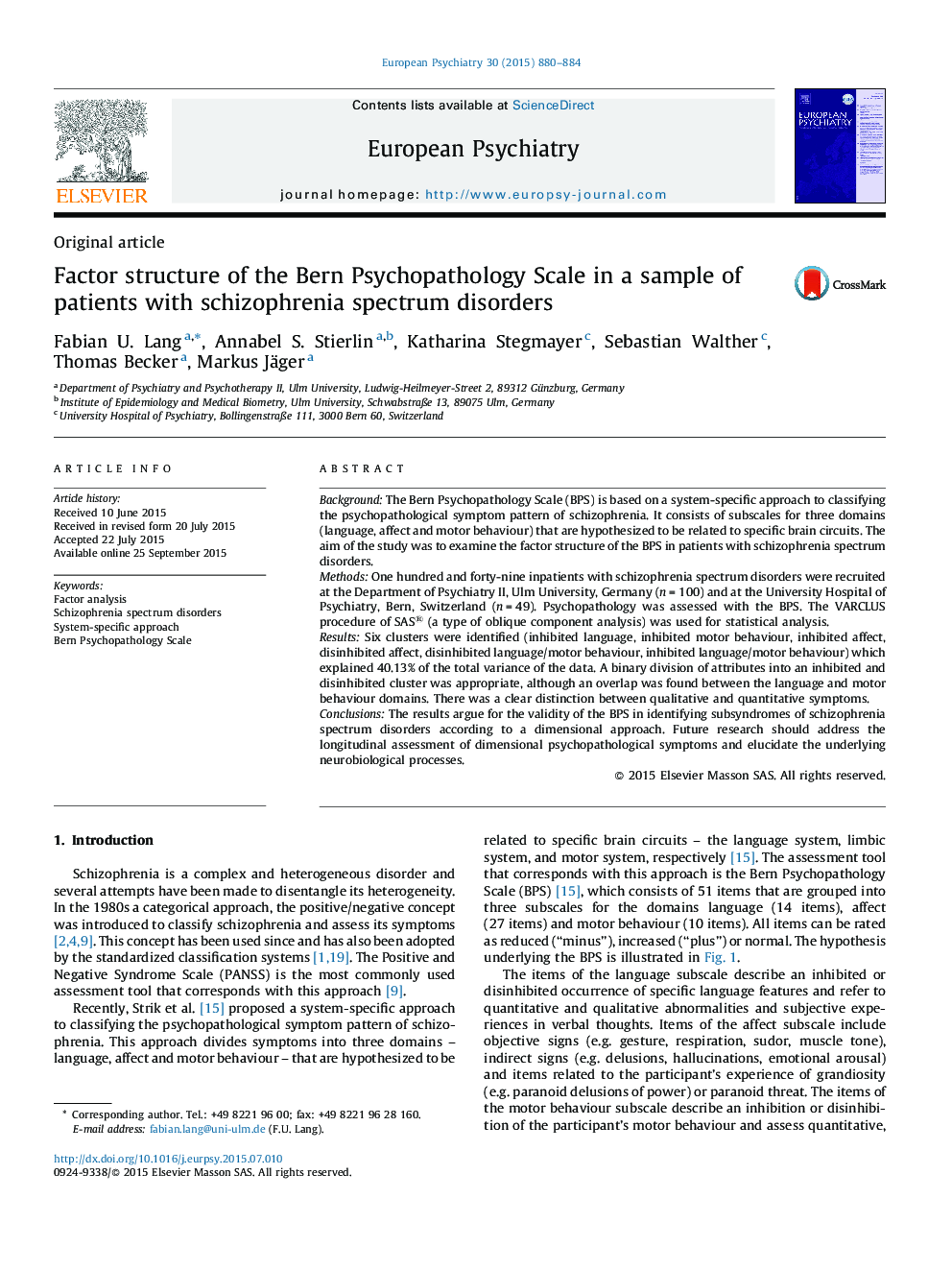| Article ID | Journal | Published Year | Pages | File Type |
|---|---|---|---|---|
| 4183716 | European Psychiatry | 2015 | 5 Pages |
BackgroundThe Bern Psychopathology Scale (BPS) is based on a system-specific approach to classifying the psychopathological symptom pattern of schizophrenia. It consists of subscales for three domains (language, affect and motor behaviour) that are hypothesized to be related to specific brain circuits. The aim of the study was to examine the factor structure of the BPS in patients with schizophrenia spectrum disorders.MethodsOne hundred and forty-nine inpatients with schizophrenia spectrum disorders were recruited at the Department of Psychiatry II, Ulm University, Germany (n = 100) and at the University Hospital of Psychiatry, Bern, Switzerland (n = 49). Psychopathology was assessed with the BPS. The VARCLUS procedure of SAS® (a type of oblique component analysis) was used for statistical analysis.ResultsSix clusters were identified (inhibited language, inhibited motor behaviour, inhibited affect, disinhibited affect, disinhibited language/motor behaviour, inhibited language/motor behaviour) which explained 40.13% of the total variance of the data. A binary division of attributes into an inhibited and disinhibited cluster was appropriate, although an overlap was found between the language and motor behaviour domains. There was a clear distinction between qualitative and quantitative symptoms.ConclusionsThe results argue for the validity of the BPS in identifying subsyndromes of schizophrenia spectrum disorders according to a dimensional approach. Future research should address the longitudinal assessment of dimensional psychopathological symptoms and elucidate the underlying neurobiological processes.
